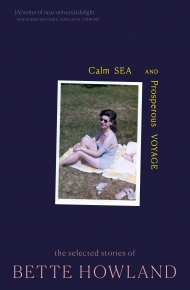Monday Memo
• November 25, 2019

What we're talking about this week:
- Shirley Hazzard’s 2003 novel The Great Fire, in a beautiful new pocket-sized edition from Picador Modern Classics. Some years ago, New York Society Library hosted an exhibition on Hazzard and her husband Francis Steegmuller, who together made an iconic literary duo. In the monograph of the exhibition, Jonathan Galassi draws a portrait of the couple at home: “One year I remember she told me they were reading to each other the whole of Gibbon every morning after breakfast. The cavalcade continued in their sprawling, book-filled New York apartment, adorned with note-worthy French and Italian pictures, including works by Redon, Jacques Villon, and others.” Shirley Hazzard, whose work is also the subject of a forthcoming book from Michelle de Kretser, was a writer who combined intellect with human insight. “Not only is she among the most intelligent writers,” writes Galassi, “she is also among the most humane, the most loving toward her characters and hence toward us, her readers.”
- Galassi’s characterization of Hazzard’s writing—equal parts cerebral and humane—reminds us of what Garth Greenwell had to say about Jean Stafford in a recent conversation with Deborah Treisman for the New Yorker's fiction podcast. “She is not interested in flattering our sensibilities. . . .There’s this remarkable ability she has to balance this lacerating irony with a very plangent pathos.” Greenwell expressed his remorse that until recently, he had known Stafford “horrifyingly—as only Robert Lowell’s first wife.” But he was happy to have discovered her. “I’m a convert and a proselytizer, and I say justice for Jean Stafford.” His forthcoming novel Cleanness is on our Thanksgiving holiday reading, and we are thrilled that he will join us in honoring Treisman at our annual celebration of literature on December 9.
- And speaking of proselytizing, we were delighted to see New Directions’s forthcoming book of poetry from Black Mountain College. Those interested in the history of the college might also enjoy Martha King’s memoir in A Public Space No. 23. Attending Black Mountain in its final years with her partner, Basil King, she crossed paths with many artists, some legendary, some unknown. Her account of her Black Mountain years explores questions of fame and anonymity. “Who is Basil King? How important is his art?” she writes. “For that matter, who is Martha? Why, in defiance of all the tropes of male-female relationships in the late twentieth and early twenty-first centuries, has she lived her life in the context of his?”
“Don’t worry,” King assures us. “Don’t worry if you do recognize names and don’t worry if all of them are from out of the blue. Just trust the tale, because in a tale, real events occur and so do inventions.”
- The thought of classrooms—and the artist’s role within them—makes us think of Edmund White, who was honored last Wednesday with the National Book Foundation’s medal for Distinguished Contribution to American Letters. In addition to writing more than two dozen works over the course of a half century, White taught fiction at Princeton for nearly twenty years. Associate editor Laura Preston, who took his undergraduate workshop, writes: You often hear of workshop leaders who are legendary for their hard edges and harsh critiques, but Edmund White took a different approach. What made him remarkable was that he was sincerely delighted by our writing, no matter how ungainly our efforts. Someone would present a story and White would react, often with great animation, and always with interest. Among our class emerged an unspoken competition. Who could make Professor White laugh the hardest; who could make him blush? When I write these days, I play a version of that game in my head. Will anyone take delight in what I say? Will anyone turn red?
- Finally, as we approach the Thanksgiving holiday, we have been revisiting some of our favorite food writings. On the topic of holiday gatherings, the great M. F. K. Fisher writes: “The cold truth is that family dinners are more often than not an ordeal of nervous indigestion, preceded by hidden resentment and ennui and accompanied by psychosomatic jitters.” To ease the psychosomatic jitters, may we suggest the following recipe for “an agreeable drink with a surprising lift,” from Fisher’s How to Cook a Wolf:
HALF-AND-HALF COCKTAIL
½ cup dry vermouth
½ cup dry sherry
½ lemon
ice
dash of angostura bitters if desired
Pour vermouth and sherry into shaker over cracked ice. Add lemon juice and bitters. Stir well, pour into glasses and top with the rest of the lemon rind.
Fisher, in the interest of thrift, suggests buying sherry by the gallon.
Back to Top
Categories
Archive
About
A Public Space is an independent, non-profit publisher of the award-winning literary and arts magazine; and A Public Space Books. Since 2006, under the direction of founding editor Brigid Hughes the mission of A Public Space has been to seek out and support overlooked and unclassifiable work.
Featured Title

"A ferocious sense of engagement... and a glowing heart." —Wall Street Journal
Current Issue

Subscribe
A one-year subscription to the magazine includes three print issues of the magazine; access to digital editions and the online archive; and membership in a vibrant community of readers and writers.
Newsletter
Get the latest updates from A Public Space.
